Take Back the Night (2021)
Directed by: Gia Elliot
Written by: Emma Fitzpatrick, Gia Elliot
Starring: Angela Gulner, Emma Fitzpatrick, Jennifer Lafleur, Sibongile Mlambo
USA
AVAILABLE ON BLU-RAY: 10TH OCTOBER, from ARROW VIDEO
RUNNING TIME: 90 mins
REVIEWED BY: Dr Lenera
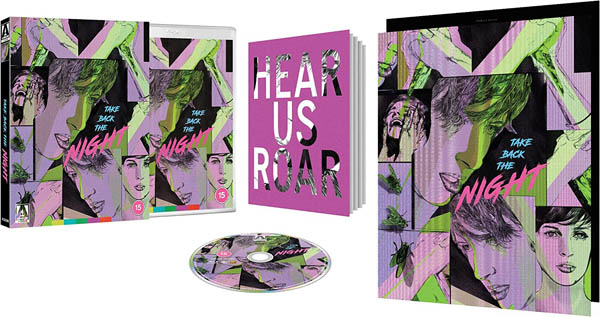
Jane is a Los Angeles-based artist who goes by the name “Jane Doe Does”. One evening she attends a party which is being held in celebration of the first public exhibition of her work, and a very successful one at that. Drink is followed by drugs and even a ‘quickie’ with a married man, but on her home she’s sexually assaulted by a strange creature who slices open her stomach and leaves a crescent scar on her wrist. She staggers into the local hospital clearly having suffered a terrible ordeal, but her doings at the party, her traumatic childhood and her inability to remember everything that happened cause people to question the authenticity of her account, including even her sister. Maybe reaching out online could do some good? Maybe others have suffered similar experiences?
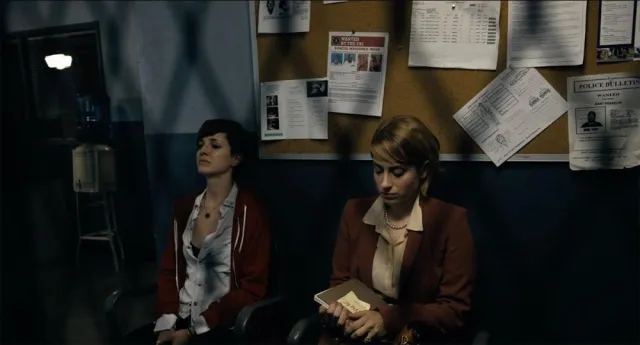
We’re told that one in ten women have suffered sexual assault, yet it still seems that a great many of them are still not believed, something which can be as hard to deal with as an actual attack, as I can personally attest. I once knew a rape victim well and, while the attack certainly traumatised her and probably scarred her for life, it was the cavalier way in which her ordeal was questioned and dismissed which was even more upsetting, largely because she was very drunk at the time. Obviously it would be wrong for me to go into further detail, but I will say that I doubt if justice has been served in that particular case. Even though The Assault dealt with it pretty well, that being a major Hollywood production at that, films concerning sexual assault don’t tend to linger on the issue of the victim not being believed; after all it’s not as cinematic as violence which is committed both against the victim and her attackers, is it? They especially don’t seem to properly attempt to transmit the anguish of being accused of exaggerating or inventing one of the most horrible things that can happen to a woman. Well, here’s Take Back The Night to try to rectify that. It appropriately takes its title from a slogan from the 1960’s that said “Take back the night? How can women take back the night when they’ve never had it”, which led to the “Take Back The Night” organisation which is trying to end violence against women with events internationally. Writer/Director Gia Elliott and her co-writer and star Emma Fitzpatrick attempt to filter their subject through suitable metaphor so their film can be classed as not just a horror film but a creature feature. While the low budget they’ve been saddled with does result in something which is rather rough around the edges, they’ve certainly succeeded in putting together something which has a pretty powerful effect, in large part due to some well thought through creative choices.
Over the opening titles we hear a woman about to take a lie detector test being told by a rather emotionless man. “If your questions are unclear, it’s your responsibility to ask the examiner to clarify that question”, stuff like that. Then we cut to Jane going down some escalators, her face full of fear, uncertainty, awkwardness, anger- in fact a whole load of emotions [god Emma Fitzpatrick grabs you right from the beginning and never lets you go] but none of them happy ones. She goes onto a platform as we flash back to her being told by a detective [ nobody is named except for Jane] if her alleged injuries were self-inflicted and that she could even be convicted for wasting police time. Jane steps out onto the track as a train arrives – and we cut to the evening which started everything off. Every one of Jane’s pictures at her first display has been bought, so she deserves to celebrate, though what seems to lead her to really go for it is a friend, possibly a boyfriend, texting her that he can’t make it. Jane’s one of those strange people who has to frequently put stuff of herself up on social media, and does it even while getting pissed, though not when she’s popped a pill and shagged a man in a bath. She then helps his wife, not knowing that she’s his wife, when she’s told to leave before throwing up. After they both enjoy the effects of cocaine for a bit, she helps her into a taxi and, seeing as there’s no reception on her phone, starts to walk home in a quite fantastic buildup to terror. Elliot also did the cinematography for her film [in addition to other things] and she makes the very best out of a long alley setting [a setting we’ve all encountered] so that we expect something to come out at any moment, while a variety of sound effects ramp up the tension aurally. Hissing and growling are heard coming from a dumpster and a creepy guy won’t unlock a gate for her [“What’s in it for me”?], before something attacks her. We see very little here, though a bit more in subsequent flashbacks even though this is not explicitly graphic.
In the hospital, the investigating detective calmly and patiently questions her, though her sister is still displeased when she turns up to see Jane being asked these questions. We learn that Jane has been in trouble with the law three times and was once in a mental facility., though that’s nothing compared with what we later find out about her. As soon as she gets home she posts photographs of her injuries and posts that she’s going online in half an hour to tell of her ordeal, though a glimpse at responses shows that many aren’t sure about this, while whatever search engine she uses recommends she read a book called “Why Am I Seeking Attention”?, though this book actually proves to be revelatory. Social media is a near life saver in her case, but nonetheless we’re still invited to wonder about this online culture of ours which, reduced to its basics, is essentially a massive popularity contest. Jane won’t even end her livestream to call 911 at one point even though she’s in danger, though thankfully a random follower does it for her. No, Jane is certainly not alone, which becomes very important when an interview on primetime TV proves to be a disaster and less and less people believe her. What makes the latter even more upsetting than usual is that it’s other women who are disbelievers, though at least there seem to be many other victims of these monsters. One of them tells Jane that her particular attacker will return and, as in The Entity, it’s quite harrowing to not just see the same women having to go through it more than once but know that an assault can happen any time and almost anywhere [though her house seems to be a safe place, at least there’s that]. Will Jane be able to properly face her demon? And will her sister believe her, now that the detective and the police are lost causes, not to mention the wife of the man she bonked?
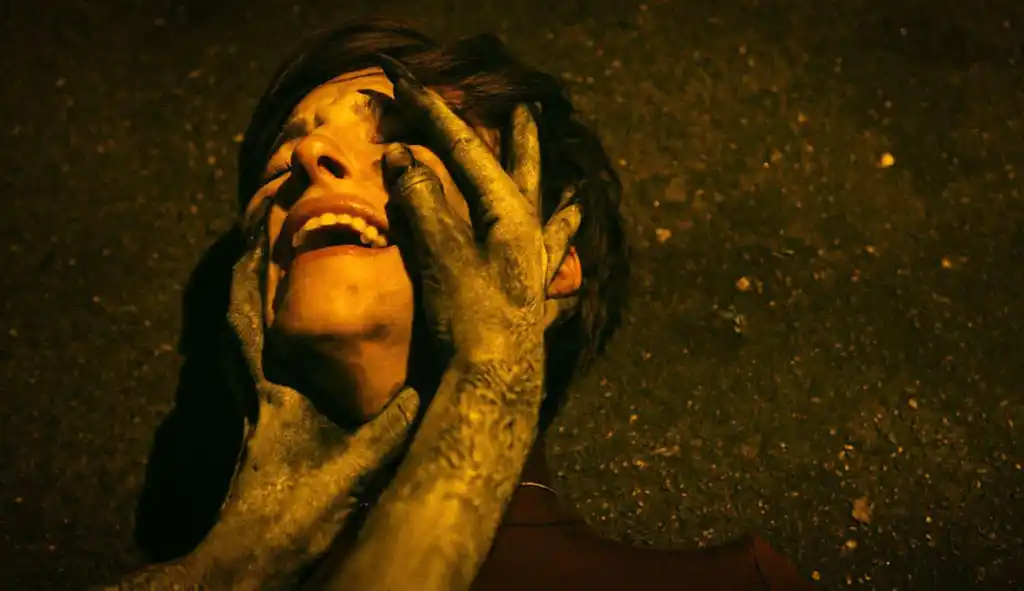
The limited budget was clearly stretched. Dialogue is sometimes poorly recorded and sets are very sparse. I reckon that some viewers will wish that the monster had turned out to be human, because we all know that humans are the worst monsters, yet the lore connected with it, even if it mostly serves a metaphorical purpose, is nice and might even be a good reason for there to be a sequel. Most will probably say that the seemingly sexless monster, a sort of ape-like thing who always has poorly rendered insects buzzing around him and who apparently smells of death, is more convincing when bits of him are glimpsed quickly than when we see him more fully, though even then it remains rather indistinct, which is a rather good thing here for more reasons than one. The CGI that augments the suit isn’t too great, but the concept of three eyes that seem to move around on the face is quite cool to this monster fan, and in the end the thing serves more of a metaphoric purpose than anything else, so it doesn’t need to look like an ILM job. While watching this film I was able to do something that I often do when I’m watching a much older film where the especial effects no longer convince yet the film is really involving me; project into my mind what the thing being represented might really look like. And the scenes in which this monster features still have a cruel intensity. Up to the thrilling climactic confrontation, Elliot has already shown a determination to make her film look as good as possible, and me being me I especially enjoyed the blurred – but not too much – visuals when Jane is “high”, but here she really goes to town, bathing things in purple that comes from a hotel sign, plus some blue and pink for good measure. It’s hard to imagine that this is her first feature, and that she shot it, as the audio commentary tells us, in just eight days!
Do we ever think that Jane could be imagining what’s clearly a symbol of the trauma that’s induced by sexual assault? I never did, though others may think differently. but then Fitzpatrick, whose encounter with The Collector ten years ago seems like nothing than compared to this, puts her total all into the role, yet she does it subtly. There aren’t any big, dramatic outbursts, it’s more internal, yet we still feel her character’s pain even though she’s not playing the most likeable person either, a good decision because we see how the fact that she’s hard to like is clearly used as a reason not to take her seriously, and shouldn’t be. She doesn’t even always act like many of us would expect a victim like would. At one point she goes out in the dress she wore when she was attacked. But here’s the thing – in truth, though movies tend to present a very limited image. Rape victims can actually behave in a variety of ways and wearing the same clothes is not that uncommon. Jennifer Lafleur as the detective and Sibongile Mlambo as her reporter girlfriend also convince, and in addition to this provide some lighter moments, though there’s one very forced bit where one looks at the laptop of the other who’s left it switched on and not just that but has left in on the page on which she was working; surely a decent detective wouldn’t be so careless? And surely a much better way of moving part of the story along could have been thought up? It’s always odd when so much care is devoted to a film but things like this still creep through. The detective is an interesting character who plays with our emotions. She’s somebody that we instantly like, then are eventually disappointed by, though importantly we don’t hate her. There are undoubtedly things about this particular case that don’t add up unless you’re Jane, and the detective also just part of a system which, even today despite strides having been made, doesn’t seem to want to really tackle this particular problem.
In a way the story’s emotional centre is the relationship between the two sisters, one of whom leads a so-called “normal” existence and one who just likes to party. Having siblings that are complete opposites is an easy and oft-used device, and we even have the scene where the “normal” one criticises the life of the other, but it comes off okay here and the mutual journey of these two develops in a pretty natural-seeming fashion even if one can predict some of the beats, with Fitzpatrick and Gulner having real chemistry together, All of the characters that we see are female, even the unsympathetic ones, the latter meaning that I can’t accuse the makers of this film of misandry which is something that’s rather prevalent in the cinema of today, unfortunately. Here, the few men, even those who are important to the narrative, are never properly glimpsed, but that’s something else to get us into the right psychological state, to feel how Jane would feel. My friend told me that she couldn’t look at men for several weeks. And, without giving too much away, the story clearly carries on as the credits role with Jane is hardly being free, though if she was it would be a betrayal of the film’s concerns. Jane, like thousands of other women, is still out there, fighting to be believed, fighting to fit in, fighting demons of both the external and the internal kind, fighting to take back the night.
Rating: 









PRODUCT DETAILS
High Definition Blu-Ray (1080p) presentation
The strong use of colour is really shown up by this presentation, though the huge amount of clarity at times also shows up the limited sets possibly a bit too much.
Original 5.1 DTS-HD MA surround audio
Optional English subtitles for the deaf and hard of hearing
Audio commentary by writer-director Gia Elliot and Alexandra Heller-Nicholas author of Rape Revenge Films: A Critical Study
This is a very forthright, rich and illuminating commentary with Heller-Nicholas clearly thrilled to be talking to Elliot. Heller-Nicholas generally steers the track, asking Elliot all the right questions, with Elliot often pausing to think about her reply but sometimes going in pretty deep. This project was born in a strange way, then shot over five years after deep research. Elliot describes the alternate openings which were considered, that the menace was chosen to be a creature than a man to avoid going into what makes some people into monsters, and even what the exact intent of these monsters is. Especially interesting is a discussion on how people tend to expect others to act in a particular way, with Elliott saying how her giving birth while making the film caused others to think that she wasn’t acting the way a mother should, while Heller-Nicholas says many couldn’t reconcile her writing her book while also giving birth at the same time. Unfortunately Elliot ends with an unpleasant misandrist comment which leaves a sour taste. Otherwise though, very good indeed.
Please Don’t Say the Word ‘Monster’ on National Television, a visual essay by film critic Emma Westwood [12 mins]
There four featurettes are short repeat a few things but do compliment each other by zooming in on different issues the film throws up. Westwood talks of how monsters have always represented fears and intense feelings such as guilt or anger, before delving into the ngture and role of Take Back The Night‘s monster and how we pigeonhole each other. As well as The Entity, the recent version of The Invisible Man and the 1932 version of Dr Jekyll [she even pronounces the name right!] And Mr Hyde are also referred to.
Trauma and Space, a visual essay by film critic Cerise Howard exploring the idea of ‘safe spaces’, sanctuary and vulnerability in Take Back the Night 5 mins]
Howard talks of how Take Back The Night shows how a supposed safe space like a police station is often no such thing due to the attitude of the people there, examines the role of Jane, the only named character in the film, and tells of how there’s no real resolution.
What is a Body?, a visual essay by film critic Justine Smith examining bodily autonomy and perception in the digital age [5 mins]
Smith describes how Jane’s digital self is very different to her physical self [ just like many of us really] but necessary for her to pick herself up, how her body must feel like it’s not hers, and how parts of her facade crumble.
#MonstersAreReal, a visual essay by film critic BJ Colangelo looking at survivor unity, sexual violence, and social media [5 mins]
Colangello looks into the double-edged sword that is social media where whatever rape victims do they can’t win [i.e. silence means it didn’t happen], and how on there, like in real life, there’s no perfect way to behave.
Theatrical trailer
Image galleries
Reversible sleeve featuring original and newly commissioned artwork by Nicole Rifkin
FIRST PRESSING ONLY: Illustrated collector’s booklet featuring a round table discussion of the film by Anna Bogutskaya, Alexandra Heller-Nicholas and Valeria Villegas Lindvall, plus a double-sided fold-out poster featuring original and newly commissioned artwork by Nicole Rifkin
Often quite masterful in its filmmaking despite its tiny budget, “Take Back The Night” is a rather original and valuable addition to a troubling but interesting sub-genre. Good contextual material also helps makes this Arrow release Highly Recommended.


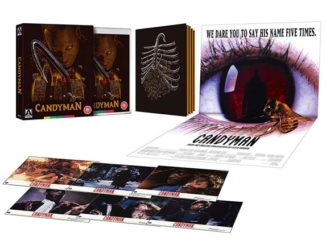

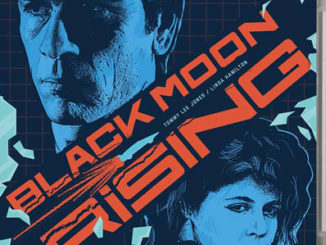
Be the first to comment